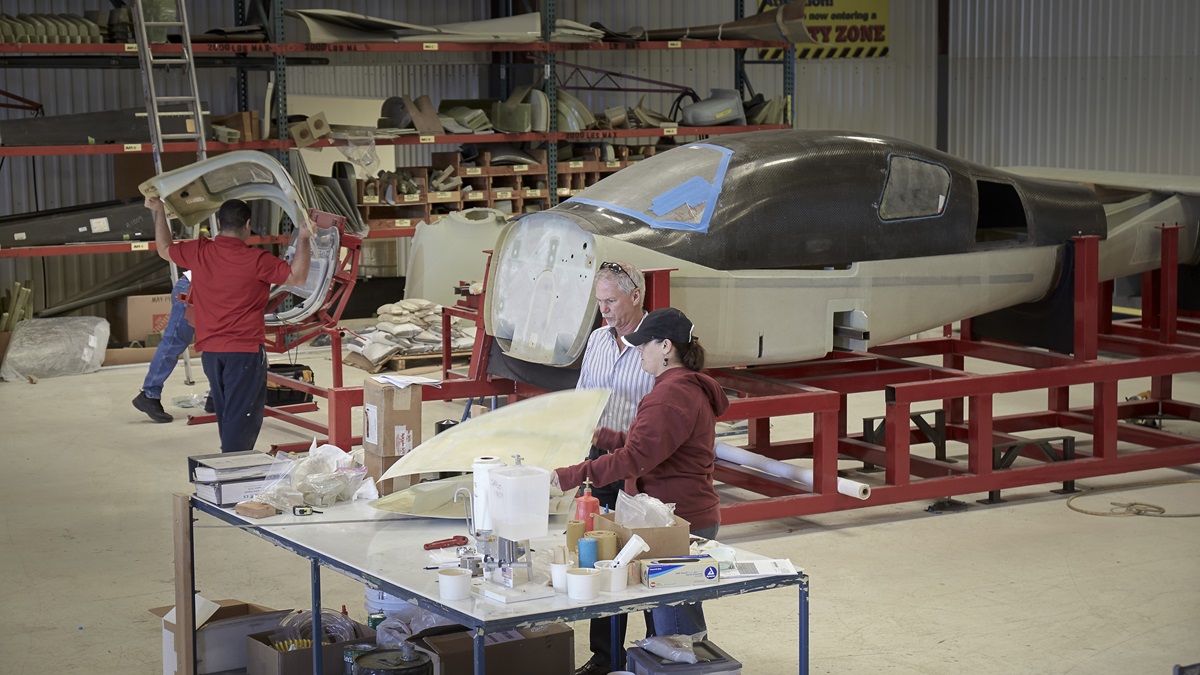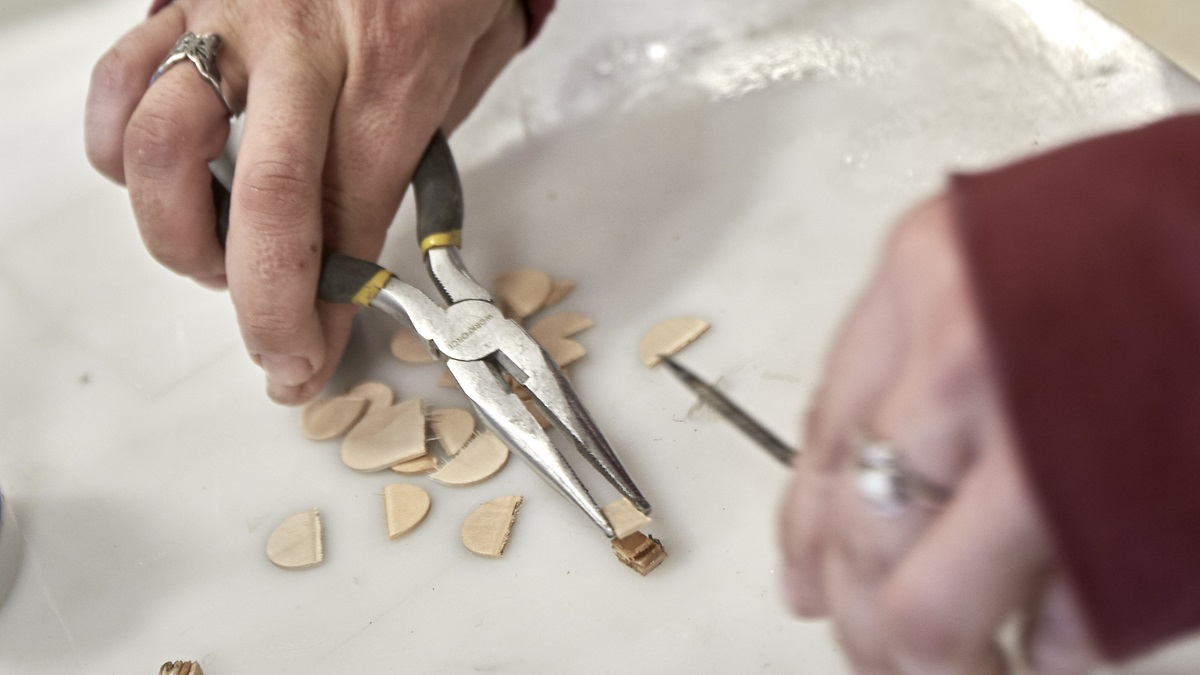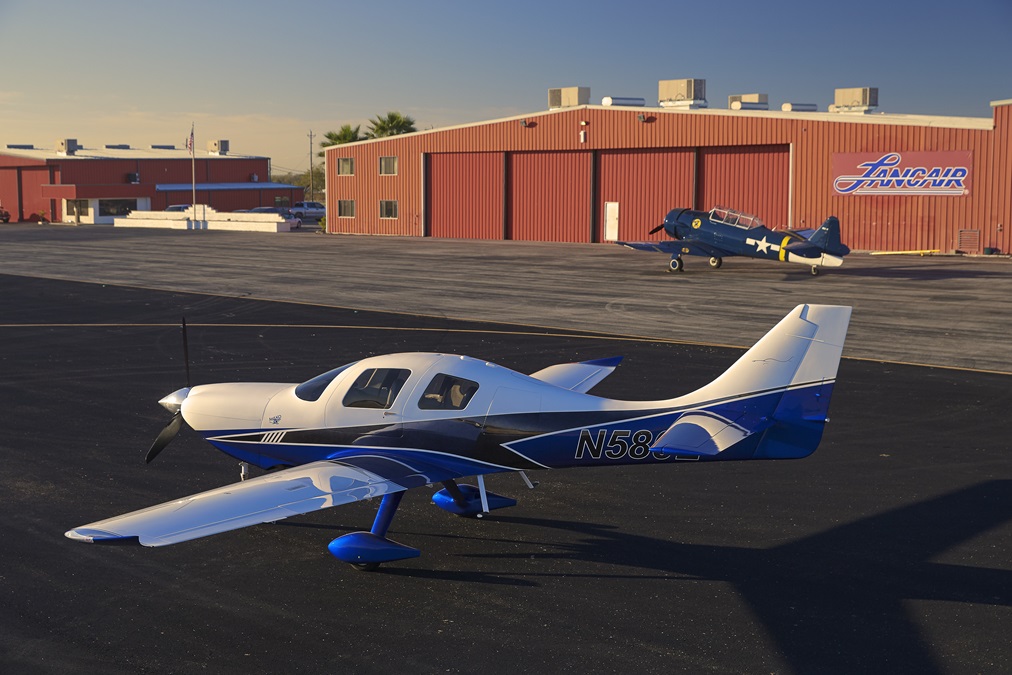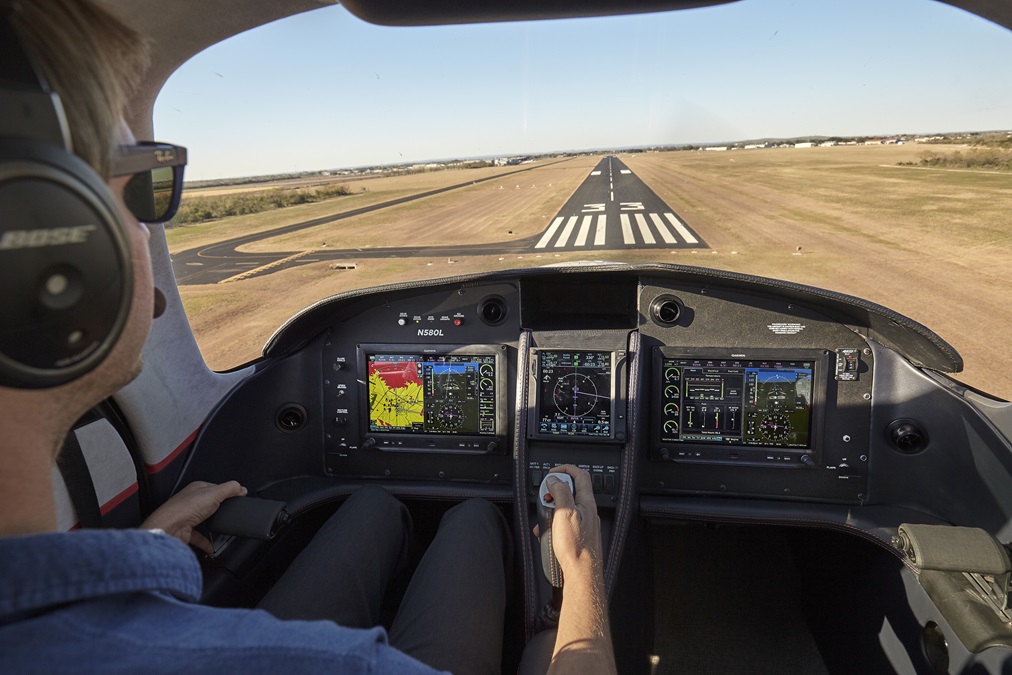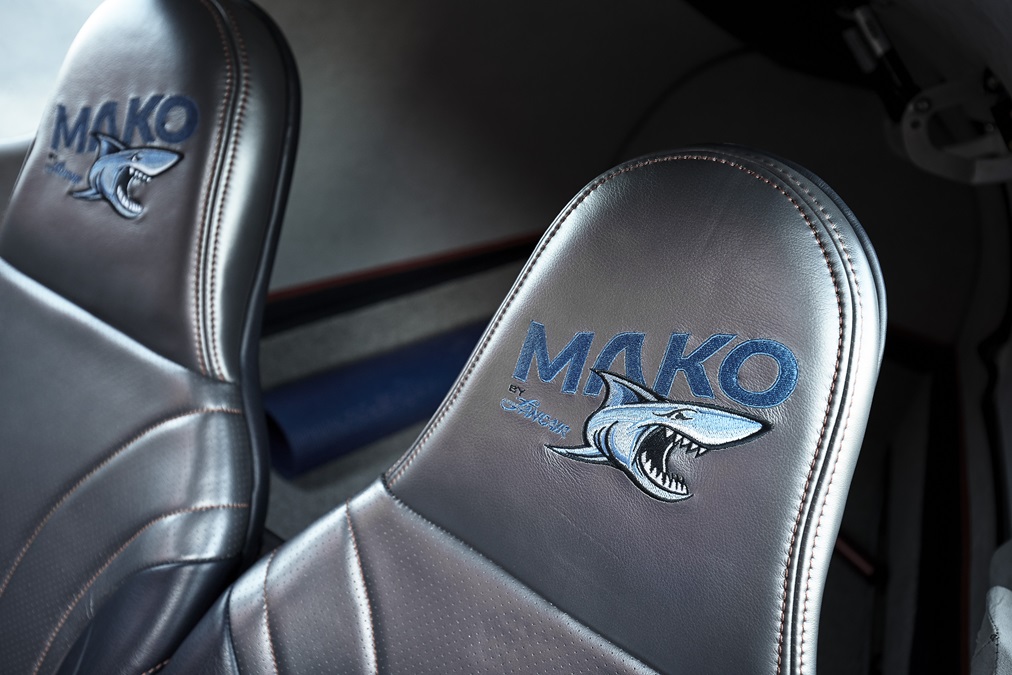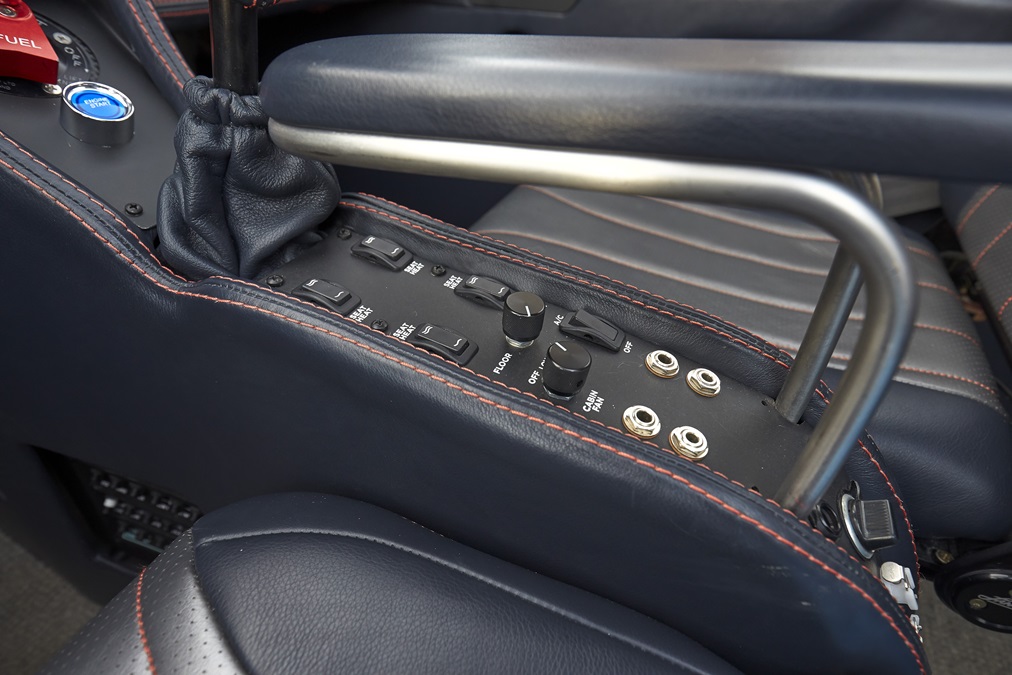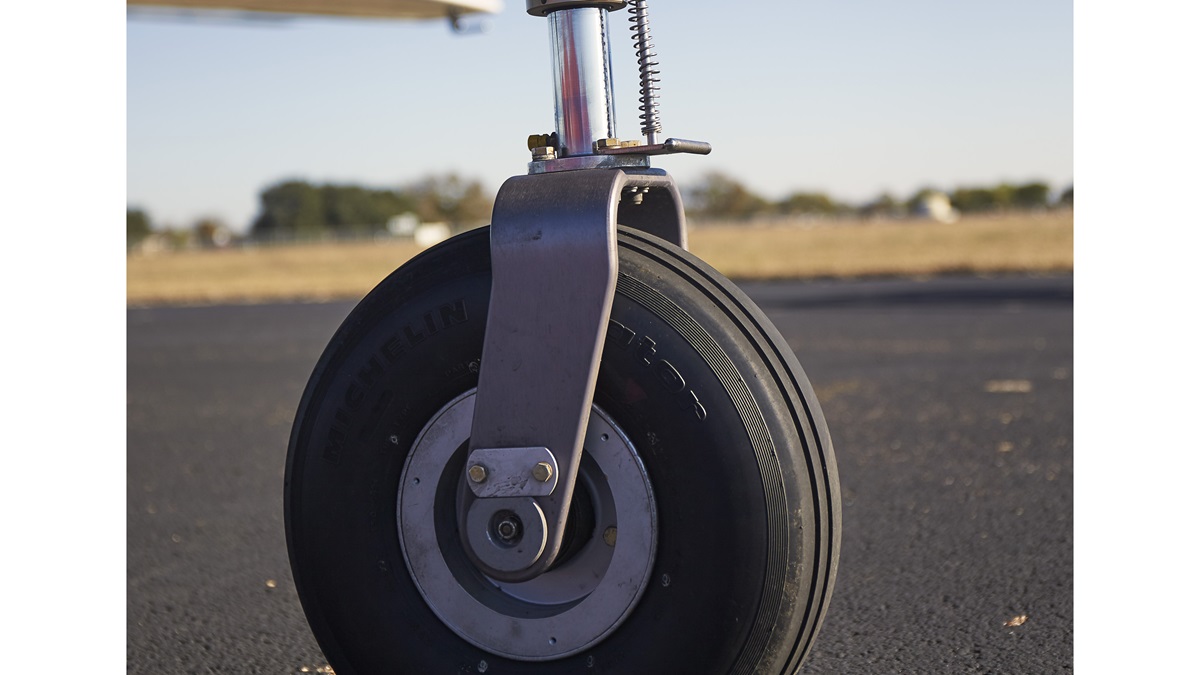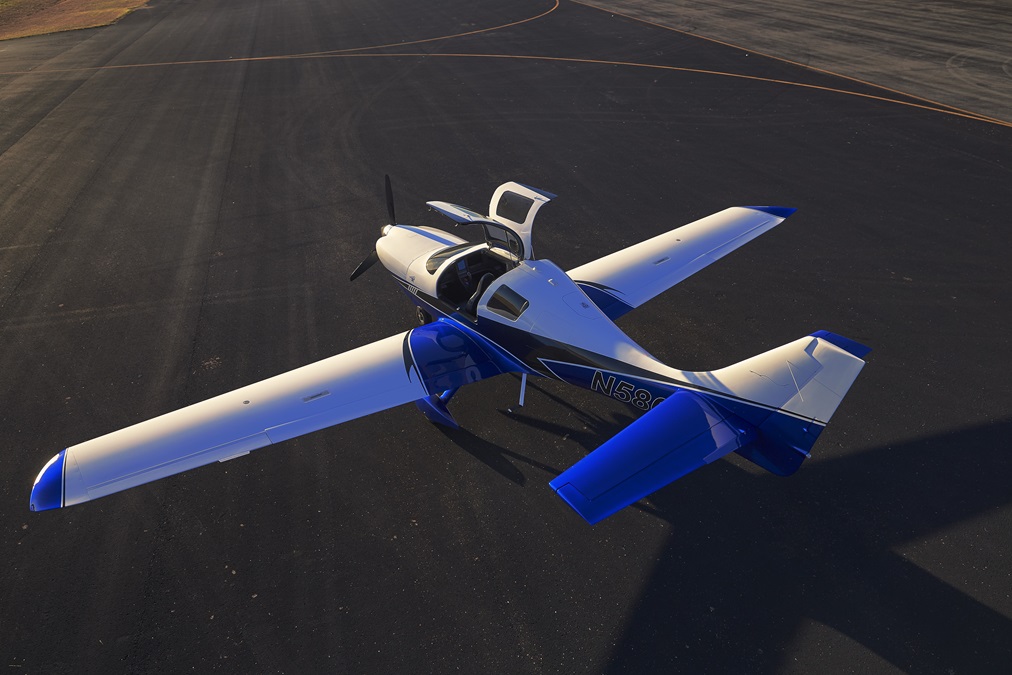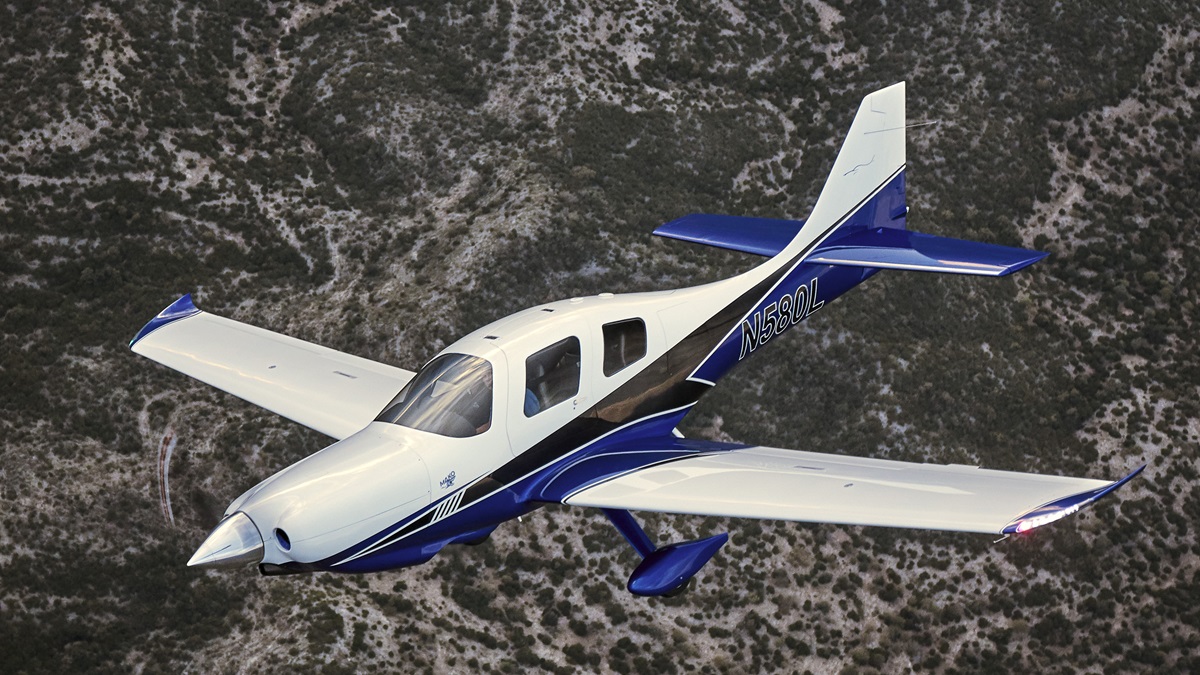Lancair Mako: On the hunt
Lancair Mako looks for a bite of the certified market
“The change in flap setting was the last piece of information the gear logic had to have before retracting the nosewheel,” said Conrad Huffstutler, Lancair’s youthful and engineering-minded president, who invented the Mako’s unusual gear system. He’s so confident in the technology that this Mako doesn’t even have a traditional landing gear lever.
“Onboard sensors already know the airplane’s airspeed, its height above the ground, throttle position, and whether there’s weight on the wheels,” he said. “Raising the flaps made it unanimous. All five of those parameters have got to be met before the landing gear retracts.”
The Mako is Lancair’s first new product since Huffstutler and his father, Mark (founder of turbine modification pioneer Sierra Industries), bought Lancair and moved it from Redmond, Oregon, to their hometown of Uvalde, Texas, in mid-2017. The Mako is a modernized Lancair ES, a four-seat, fixed-gear, long-range traveler that Lancair introduced in kit form in the early 1990s. (Lancair later formed a separate company to certify the ES, and subsequent versions morphed into the Columbia/Corvalis/TTx. Cessna ceased production of the TTx in early 2018 after selling just 23 new airplanes the previous year.)
With three adults and 60 gallons of fuel on board, we climb to 7,500 feet and level off. The Mako’s control feel is stable with moderate breakout forces that grow heavy when the pilot commands full deflection.
Lancair sells the Mako as an Experimental amateur-built kit—but the Huffstutlers’ plan for the company centers on an extensive “factory assist” program in which new owners will come to Uvalde to complete hands-on assembly tasks. They’ll also choose engine, propeller, avionics, stick type (center or side), optional airframe parachute, and type of nosewheel (retractable or fixed).
The first four Mako customers are currently building airplanes in the company’s five heated and air-conditioned red hangars on the northwest edge of Garner Field. Lancair expects others to build a dozen a year here beginning in 2019. Pricing is expected to vary from about $350,000 to $500,000, depending on options.
“Our value proposition is very simple,” Conrad said. “Our airplane will outperform a Cirrus SR22 or Cessna TTx in terms of speed, range, and payload. Ours will be made with equal or better quality, and they’ll sell for half the price of a new certified airplane.”
Innovate Quickly
The Huffstutlers got to know Lancair two years ago when they bought a Lancair IV-P—a four-seat, turbocharged, pressurized speedster they use for business travel.
“It’s fast, efficient, reliable, and really enjoyable to fly,” Conrad said. “When we sold Sierra Industries, we were looking for an aviation firm that would be a good fit for us, and Lancair was available. The closer we looked, the more certain we became that it was right for us.”
On their flight home from Oregon after scoping out the business, the father/son team swapped ideas on ways to modernize and improve the company’s products, streamline manufacturing, and improve quality.
Both were convinced that a shift was taking place in experimental aviation that would allow kit makers to radically reduce the time required for owners to build their airplanes. If that happened, technologically advanced, high-performance kit airplanes would attract pilots who had never considered owning an Experimental aircraft.
Sierra Industries invented and owned about 350 supplemental type certificates (STCs), many of them for business jets. In recent years, however, the process of getting FAA approval for existing designs became slower, more cumbersome, and more expensive. The Huffstutlers were attracted to Experimental aircraft because the rules allow them to implement their innovations more quickly.
“We’re very familiar with the certified airplane world and we keep our [FAA authorization] to do that kind of work,” Conrad said. “We’re going to maintain the same high standards at Lancair. We aren’t looking for shortcuts. We just want to get away from some of the bureaucracy and do the innovative work we love to do. This is fun for us.”
“Our value proposition is very simple. Our airplane... will be made with equal or better quality, and they’ll sell for half the price of a new certified airplane.”The Huffstutlers have been working on airplanes together since Conrad built a Wag-Aero Sport Cub as a teen and soloed it on his sixteenth birthday. They’ve collaborated on a wide variety of Experimental airplanes, complex warbirds, gliders, jets, and remote-control airplanes. Conrad also is a test pilot and worked on many of their company’s jet STCs.
Sierra Industries moved to San Antonio and changed its name after the company was sold, and that left the Huffstutlers’ 88,000-square-foot facility vacant and scores of skilled employees available. After their purchase of Lancair, the Huffstutlers have rehired about 20 workers and plan to add more as the business grows.
Much of Lancair’s fabrication work used to be done in the Philippines. The Huffstutlers have moved everything to Uvalde, and they’re investing in new materials, ovens, and specialized equipment they can use to produce composite parts. Labor costs are far higher in the United States than the Philippines, but streamlining construction and eliminating transpacific shipping can make up for at least some of that difference.
Lancair introduced a long line of two- and four-seat airplane models dating back to the mid-1980s, and the Huffstutlers plan to support all of them. They also intend to reintroduce the two-seat Legacy, an incredibly fast sport aircraft that’s especially popular among air racers.
Every kit Lancair sells includes two weeks of builder assistance at the factory. During that time, all the structural parts are assembled inside the temperature-controlled facility using precise fixtures.
“People who are familiar with what we’ve done in aviation for the last 35 years know we’ve got staying power,” Mark Huffstutler said. “We’re here in this for the long haul.”
Smooth and Precise
The Mako’s first impression is that it’s big and sleek—like its shark namesake. It strongly resembles a Lancair IV because the two models use the same fuselage and retractable nosewheel. Two gull-wing doors open upward, allowing access to front and back seats.
The panel design is remarkably clean, with two 10-inch Garmin G3X displays and a GTN 750 in the center. Transponder, audio panel, lights, and autopilot all are controlled through the 750. The absence of a propeller knob, magneto switches, and a mixture lever are striking. (Prop rpm is controlled via a rocker switch on the throttle, and mixture control is automated.)
The Mako prototype has a center stick between the front seats. Engine start is incredibly simple. Flip five switches to the On position (electronics master, alternator, avionics, ignition one, and ignition two), crack the throttle, hit the Start button, and hold it down for about three seconds while the engine comes to life. The process is identical for hot and cold starts.
Pull the doors closed, latch them, and flip the switch on the doorframes that inflate the pneumatic seals and you’re ready to taxi.
The nosewheel casters freely, so differential braking is required. Visibility is very good forward and out the sides, but there are blind spots at the door posts about 10 and two o’clock.
Runup is short. Once the engine temperatures and pressures allow, power up to 1,800 rpm, then test the standby electrical power system and dual electronic ignitions. Set elevator trim to neutral and the flaps to 10 degrees, and the Mako is ready to go.
Aligned with the runway, full throttle brings steady acceleration, and the airplane reaches its 65-knot rotation speed in about eight seconds. Hold a nose-up attitude and the main wheels unstick at about 72 knots. A 10-degree nose-up pitch attitude results in a 110-knot climb. After the gear retracts, the Mako climbs at 800 fpm up to 7,500 feet. There, a high-cruise power setting (22 inches manifold, 2,500 rpm) results in 185 KTAS at 15 gph.
The center stick is optimized for stability. The roll rate is pretty snappy—slightly more than 90 degrees per second—but it takes moderate to heavy stick pressure (and some body English) to get full deflection.
The stick grip contains a four-way hat switch for rudder and aileron trim, as well as radio transmit and autopilot disconnect buttons.
Steep turns and slow flight are smooth and precise, with guidance provided by the G3X. The Mako’s slotted flaps deploy to 38 degrees, and they provide substantial drag at their full-down setting.
The Mako is aerodynamically clean, and that’s especially noticeable during descent. At a manifold pressure setting of 20 inches, the Mako is going 180 KIAS and is deep into the yellow arc on the airspeed indicator during an 800-fpm descent. Deploying the speed brakes was tempting, but there was sufficient time to slow down at pattern altitude.
Cleared to land on Runway 4 at San Antonio International Airport, we leveled at 2,500 feet, deployed full flaps, then flew a slightly high approach at 90 knots. The nose gear deployed automatically with flaps down and throttle reduced, and frankly, it was difficult to notice the moment it came down since the airplane already was decelerating.
The airplane’s inherent stability is enhanced with gear and flaps down, and it rode through the bumps on final with minimal fuss. The wind was 350 at 14 knots, a 60-degree crosswind, but the crosswind component hardly seemed to affect the flare or touchdown, and the wide main gear kept the airplane tracking straight on the ground.
Shutdown was a simple matter of flipping the five switches to the Off position. Deflate the door seals, open the handle, and fresh air swirls in through the broad opening.
More than a Mustang
Lancair designs have a well-earned reputation for being fast, efficient, and demanding to build and fly. The company sold about 2,250 kits, and roughly 1,100 of them have been completed and flown.
The ES, the platform on which the Mako is built, marked a break from that tradition. Its fixed landing gear and longer wing were meant to appeal to a broader market—and they did. The ES was on track to become one of the company’s best-selling models, but it got short shrift when the company pursued FAA certification. Then, Lancair recognized the same thing the Huffstutlers do now: The ES would cut into the market for FAA-certified airplanes.
The Mako is sleek and appealing on the outside—and it’s comfortable, roomy, with good visibility and terrific avionics on the inside.
The retractable nosewheel is an interesting concept that the company says increases cruise speed by up to 12 knots. The nosewheel is particularly draggy because it’s located in the center of the slipstream where accelerated air from the propeller imposes an especially high drag penalty. Personally, I’d prefer either fixed or fully retractable landing gear. Call me old-fashioned, but if the gear moves, I want to have a lever for that—even though I recognize I’m less reliable than software.
Lancair likes to compare its Mako to much more expensive, factory-built Cirrus SR22s. The Mako shines in those comparisons because of its thoroughly impressive speed, range, payload, and relatively low price—and those are the things pilots talk (and care) about most. Lancair isn’t as anxious to talk about its main Experimental competitor, the metal Van’s RV–10. Both are four-seat, tricycle-gear, six-cylinder travelers. But the comparison isn’t as one-sided. The Mako beats the RV–10 in speed and range, but payload (depending on engine, fuel capacity, and other options) is close, and the RV–10 could win on price.
But even when compared to other kit manufacturers, Lancair sees its evolving factory assist program as a key differentiator. Owners can help as much, or as little, as they want, and they can finish their airplanes in as few as six months.
Lancair’s future also depends on broad customer acceptance of the Experimental category. For many, it depends on their willingness to come to Uvalde and invest sweat equity in their future airplane. (And if they come in the summer, that sweat equity could be considerable!)
There’s no doubt, however, about the airplane. The Mako, like the Lancair ES (and the turbocharged, pressurized ES-P), is a proven design, an impressive traveler, and joyful to fly.
The Huffstutlers are focused, determined aviation entrepreneurs, and they’re remarkably adept at spotting aviation niches where they can make meaningful improvements. They’re so committed to making Lancair work that they sold their beloved P–51 Mustang to come up with the capital to buy Lancair—and that’s a move that no pilot would make lightly.
“We absolutely loved the Mustang,” Conrad said. “It was a privilege to own and fly. But selling it allows us to launch Lancair [with] no debt. Making Lancair a success means even more to us than having a Mustang.”
Email [email protected]



